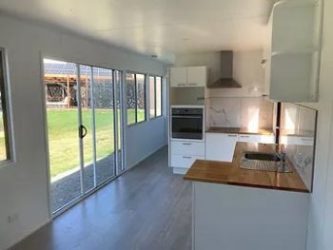Tiny House Living in Australia Explained
20 January 2023
The popularity of tiny homes has never been higher. Even TV shows appear about living in tiny houses, there are active Facebook groups, and adorable tiny houses are showing up on Instagram feeds. But what exactly is a tiny house, and are they suitable for long-term living? Can you live comfortably in a home that is only 500 square feet?
For most hard-working Australians, owning a home is a pipe dream, which is reflected in the massive shift towards lifelong renters in most of Australia’s main cities. In some areas, the average cost of a home is $1 million, and all it takes for your household budget to collapse is a fluctuating mortgage rate, increasing utility costs, or employment insecurity. For most Australians, handling home finances is comparable to walking a tightrope. Due to the high cost of renting in Australia, tiny homes are becoming an attractive alternative. Here are the top reasons fuelling the desire for a tiny house living in Australia.
Australia’s Housing Costs Are Absurdly High
This comes as no surprise. Even though Australia has a lot of land and a relatively low population density of 3 people per square kilometre, housing expenses are extremely high and steadily growing. And prices elsewhere have been growing as well, not only in housing. The pandemic-related supply chain disruptions, rising cost of raw materials, and global increase in oil prices are also driving up living expenses. These are just a few factors influencing Australia’s growing interest in tiny homes. The demand for tiny homes is partly a result of shifting lifestyle preferences.
Options for Sustainable Living
Every product we use has an environmental cost in terms of carbon emissions, from toothbrushes and toothpaste to paper towels and iPhones. In other words, carbon is incorporated into everything. A tiny home is a terrific way to achieve environmental sustainability and lower carbon footprint. Owners of tiny homes looking for sustainable solutions use relatively little energy and water. You can install compostable toilets in the majority of tiny homes. They also offer alternatives for recycling greywater and solar panel installation, so they are entirely off the grid.
Pursuing Financial Independence
The desire to own a home has its challenges. You have to give up a sizable portion of your income to fulfil that dream due to high housing costs and home loan interest rates. Tiny houses intrigue those looking for financial freedom because they are affordable and don’t require 30-year mortgage payments. If you want a home without high housing and living cost, then shifting to tiny house living is the key.
The Rising Trend of Downsizing
Australians are embracing downsizing in great numbers as it is becoming increasingly popular in the Western world. Baby Boomers’ downsizing their empty nests set off the trend. However, younger generations, like Gen X and Millennials, are already integrating with them for their unique reasons. They strive to alleviate stress and problems associated with material consumption by simplifying their life and placing less value on material possessions. They understand that owning anything, even a large property, consumes time you may spend doing more fun things. A tiny house resolves this issue.
As Australians strive for inexpensive housing where people can sleep in a safe space, travel comfortably, and lessen their environmental impact, the tiny house movement will undoubtedly continue to expand and innovate. So, if you are ready to jump on the bandwagon, Teeny Tiny Homes is a Builder of Tiny Homes and Transportable Buildings in Australia. We provide affordable pre-made and customised tiny house floor plans based on your preferences and needs. Call us right away at 0426 813 569 for more information.
Optimized by: Netwizard SEO









